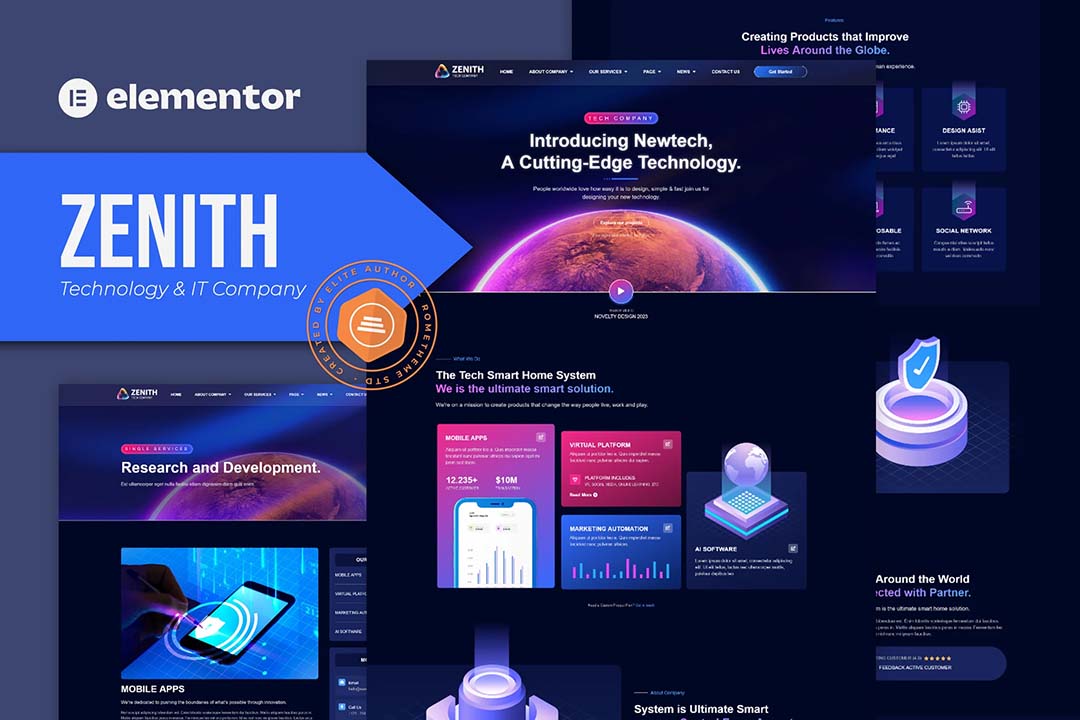Object-Oriented Programming (OOP) is an important paradigm in software that centers on "objects" - instances of classes that contain data and behavior rather than "actions". PHP, known for its server-side scripting, has benefited greatly from OOP. This is because OPP supports modular and reusable code, making it easier to maintain. In turn, this facilitates better organization and scalability for larger projects. Mastering OOP is important for developers working with WordPress themes, plugins, and custom solutions.
![Image[1]-Object-Oriented Programming (OOP) in PHP: Changing WordPress Development - Photon Flux.com | Professional WordPress Repair Service, Global Reach, Fast Response](https://www.361sale.com/wp-content/uploads/2024/04/image-789.png)
Advantages of OOP in PHP Development
OOP significantly facilitates PHP development by enhancing modularity, reusability, extensibility, maintainability, and teamwork. It organizes PHP code by dividing it into objects, each representing a specific part of the application. Using objects, you can easily reuse code, saving time and reducing errors.
With that in mind, let's dive into two specific benefits of OOP in PHP, focusing on how it can transform the development process.
1. Code reusability and maintenance
Thanks to inheritance and polymorphism, OOP in PHP makes it easy to reuse code. Classes can use properties and methods from other classes. In this way, old code can be used in new ways with only minor changes.
OOP also makes it easier to manage your code. Encapsulation means that objects keep their details private, sharing only what they need and using special methods called getters and setters. This approach helps prevent changes in one part of your application from causing problems in other parts, making it easier to update and maintain your code.
Finding and fixing errors in certain parts of the system is also made easier because the object itself is complete. This improves the overall quality and reliability of the code.
![Image [2] - Object-Oriented Programming (OOP) in PHP: Changing WordPress Development - Photon Flux | Professional WordPress Repair Service, Worldwide, Fast Response](https://www.361sale.com/wp-content/uploads/2024/04/image-790.png)
2. Enhancing clarity and structure
OOP Usage Classes respond in singingboyfriendMake PHP code cleaner and more organized. Classes are like templates for objects, keeping everything that belongs together in one place.OOP also allows classes to use the functionality of other classes, which means not having to write the same code over and over again. All of this helps make code cleaner, easier to fix, and better organized.
Clear code from OOP helps teams work better together. It's easier for everyone to understand what the code does, which means less time explaining things and more time doing the work. It also reduces errors and helps keep projects on track. When the code is neat and organized, new team members can quickly follow along.
Implementing OOP in PHP
In PHP's OOP, code is organized using classes and objects, just like blueprints and houses. You can create classes for anything, such as users or books, including their features and operations. Then, use inheritance to create new classes from existing classes, which saves time by not duplicating code. And, because encapsulation keeps some parts of the class private, the code is safer.
![Image [3] - Object-Oriented Programming (OOP) in PHP: Changing WordPress Development - Photon Flux | Professional WordPress Repair Service, Worldwide, Fast Response](https://www.361sale.com/wp-content/uploads/2024/04/image-791.png)
1. Define a class with attributes and methods
Start with a class that contains title, content, and status attributesArticle , and methods for setting and displaying these properties.
class Article {private $title.private $content; private $status; private $status.private $status.const STATUS_PUBLISHED = 'published';const STATUS_DRAFT = 'draft'; const STATUS_DRAFT = 'draft'; private $statuspublic function __construct($title, $content) {$this->title = $title;$this->content = $content;$this->status = self::STATUS_DRAFT;}public function setTitle($title) {$this->title = $title; } public function setTitle($this; return $this; }return $this; } public function setTitle($title)}public function setContent($content) {$this->content = $content; return $this; } public function setContent($this; } }return $this; }}public function setStatus($status) {$this->status = $status; return $this; } public function setStatus($status; }return $this; }}public function display() {echo "<h2>{$this->title}</h2><p>{$this->content}</p><strong>Status: {$this->status}</strong>";}}class Article { private $title. private $content; private $status; private $status. private $status. const STATUS_PUBLISHED = 'published'; const STATUS_DRAFT = 'draft'; const STATUS_DRAFT = 'draft'; private $status public function __construct($title, $content) { $this->title = $title; $this->content = $content; $this->status = self::STATUS_DRAFT; } public function setTitle($title) { $this->title = $title; } public function setTitle($this; return $this; } return $this; } public function setTitle($title) } public function setContent($content) { $this->content = $content; return $this; } public function setContent($this; } } return $this; } } public function setStatus($status) { $this->status = $status; return $this; } public function setStatus($status; } return $this; } } public function display() { echo "<h2>{$this->title}</h2><p>{$this->content}</p><strong>Status: {$this->status}</strong>"; } }class Article { private $title. private $content; private $status; private $status. private $status. const STATUS_PUBLISHED = 'published'; const STATUS_DRAFT = 'draft'; const STATUS_DRAFT = 'draft'; private $status public function __construct($title, $content) { $this->title = $title; $this->content = $content; $this->status = self::STATUS_DRAFT; } public function setTitle($title) { $this->title = $title; } public function setTitle($this; return $this; } return $this; } public function setTitle($title) } public function setContent($content) { $this->content = $content; return $this; } public function setContent($this; } } return $this; } } public function setStatus($status) { $this->status = $status; return $this; } public function setStatus($status; } return $this; } } public function display() { echo "<h2>{$this->title}</h2><p>{$this->content}</p><strong>Status: {$this->status}</strong>"; } }
2. Creating objects and implementing method chains
Create an article object and use themethod chain to set its properties:
$article = new Article("OOP in PHP", "Object-Oriented Programming concepts.");$article->setTitle("Advanced OOP in PHP")->setContent("Exploring advanced concepts in OOP.")->setStatus(Article::STATUS_PUBLISHED)-> display();$article = new Article("OOP in PHP", "Object-Oriented Programming concepts."); $article->setTitle("Advanced OOP in PHP")->setContent("Exploring advanced concepts in OOP.")->setStatus(Article::STATUS_PUBLISHED)-> display();$article = new Article("OOP in PHP", "Object-Oriented Programming concepts."); $article->setTitle("Advanced OOP in PHP")->setContent("Exploring advanced concepts in OOP.")->setStatus(Article::STATUS_PUBLISHED)-> display();
3. Enhancing encapsulation and inheritance
Enhance encapsulation by using getter and setter methods and create aFeaturedArticle Classes inherited fromArticle::
class FeaturedArticle extends Article {private $highlightColor = '#FFFF00'; // Default highlight colorpublic function setHighlightColor($color) {$this->highlightColor = $color; // Default highlight color.return $this; }}public function display() {echo "<div> style='background-color: {$this->highlightColor};'>";";parent::display();echo "</div>";}}$featuredArticle = new FeaturedArticle("Featured Article", "This is a featured article.");$featuredArticle->setStatus(FeaturedArticle::STATUS_PUBLISHED)->setHighlightColor('#FFA07A')->display();class FeaturedArticle extends Article { private $highlightColor = '#FFFF00'; // Default highlight color public function setHighlightColor($color) { $this->highlightColor = $color; // Default highlight color. return $this; } } public function display() { echo "<div> style='background-color: {$this->highlightColor};'>";"; parent::display(); echo "</div>"; } } $featuredArticle = new FeaturedArticle("Featured Article", "This is a featured article."); $featuredArticle->setStatus(FeaturedArticle::STATUS_PUBLISHED)->setHighlightColor('#FFA07A')->display();class FeaturedArticle extends Article { private $highlightColor = '#FFFF00'; // Default highlight color public function setHighlightColor($color) { $this->highlightColor = $color; // Default highlight color. return $this; } } public function display() { echo "<div> style='background-color: {$this->highlightColor};'>";"; parent::display(); echo "</div>"; } } $featuredArticle = new FeaturedArticle("Featured Article", "This is a featured article."); $featuredArticle->setStatus(FeaturedArticle::STATUS_PUBLISHED)->setHighlightColor('#FFA07A')->display();
4. Interfaces and polymorphism
Define an interface for publishable content and include it in theArticle class to implement it to demonstrate polymorphism:
interface Publishable {public function publish(); }}class Article implements Publishable {// Existing class code...public function publish() {$this->setStatus(self::STATUS_PUBLISHED); echo "Article '{$this->title}' published.echo "Article '{$this->title}' published."; }}}function publishContent(Publishable $content) {$content->publish(); } function publishContent(Publishable $content->publish(); }}publishContent($article);interface Publishable { public function publish(); } } class Article implements Publishable { // Existing class code... public function publish() { $this->setStatus(self::STATUS_PUBLISHED); echo "Article '{$this->title}' published. echo "Article '{$this->title}' published."; } } } function publishContent(Publishable $content) { $content->publish(); } function publishContent(Publishable $content->publish(); } } publishContent($article);interface Publishable { public function publish(); } } class Article implements Publishable { // Existing class code... public function publish() { $this->setStatus(self::STATUS_PUBLISHED); echo "Article '{$this->title}' published. echo "Article '{$this->title}' published."; } } } function publishContent(Publishable $content) { $content->publish(); } function publishContent(Publishable $content->publish(); } } publishContent($article);
5. Characteristics of the use of joint acts
PHP allows you to add functions to a class using features without having to inherit from another class. Use the following code to introduce a feature for logging activity within the CMS:
trait Logger {public function log($message) {// Log message to a file or databaseecho "Log: $message"; }}}class Article {class Article { use Logger; } }// Existing class code...public function publish() {$this->setStatus(self::STATUS_PUBLISHED); $this->log("Article '{$this->title}' published.")$this->log("Article '{$this->title}' published.");}}trait Logger { public function log($message) { // Log message to a file or database echo "Log: $message"; } } } class Article { class Article { use Logger; } } // Existing class code... public function publish() { $this->setStatus(self::STATUS_PUBLISHED); $this->log("Article '{$this->title}' published.") $this->log("Article '{$this->title}' published."); } }trait Logger { public function log($message) { // Log message to a file or database echo "Log: $message"; } } } class Article { class Article { use Logger; } } // Existing class code... public function publish() { $this->setStatus(self::STATUS_PUBLISHED); $this->log("Article '{$this->title}' published.") $this->log("Article '{$this->title}' published."); } }
OOP in WordPress Development
The OOP principles greatly enhance WordPress development, especially when creating themes, plugins and widgets. With the help of OOP, you can write cleaner, scalable and maintainable code for your WordPress website. We'll provide some examples that you can copy and paste into your WordPress deployment for testing.
![Image [4] - Object-Oriented Programming (OOP) in PHP: Changing WordPress Development - Photon Flux | Professional WordPress Repair Service, Worldwide, Fast Response](https://www.361sale.com/wp-content/uploads/2024/04/image-792.png)
OOP in WordPress Themes: Custom Post Type Registration
To demonstrate the use of OOP in a WordPress theme, a class needs to be created to handle the registration of custom post types.
Put the following code into your theme's functions.php file. Your theme can be found in the wp-content/themes directory.
class CustomPostTypeRegistrar {private $postType.private $args.public function __construct($postType, $args = []) {$this->postType = $postType;$this->args = $args;add_action('init', array($this, 'registerPostType'));}public function registerPostType() {register_post_type($this->postType, $this->args);}}// Usage$bookArgs = ['has_archive' => true.]; new CustomPostTypeReportnew CustomPostTypeRegistrar('book', $bookArgs);class CustomPostTypeRegistrar { private $postType. private $args. public function __construct($postType, $args = []) { $this->postType = $postType; $this->args = $args; add_action('init', array($this, 'registerPostType')); } public function registerPostType() { register_post_type($this->postType, $this->args); } } // Usage $bookArgs = [ 'has_archive' => true. ]; new CustomPostTypeReport new CustomPostTypeRegistrar('book', $bookArgs);class CustomPostTypeRegistrar { private $postType. private $args. public function __construct($postType, $args = []) { $this->postType = $postType; $this->args = $args; add_action('init', array($this, 'registerPostType')); } public function registerPostType() { register_post_type($this->postType, $this->args); } } // Usage $bookArgs = [ 'has_archive' => true. ]; new CustomPostTypeReport new CustomPostTypeRegistrar('book', $bookArgs);
This code dynamically registers custom post typesbook and its use of arrays to pass detailed informationbookArgs . It is possible to add a new line to the labeledBooksto see the newly created custom post type in the WordPress admin sidebar.
![Image [5]-Object Oriented Programming (OOP) in PHP: Changing WordPress Development - Photon Flux | Professional WordPress Repair Service, Global Reach, Fast Response](https://www.361sale.com/wp-content/uploads/2024/04/image-784.png)
OOP: Shortcode Handler in WordPress Plugin
For the plugin example, develop a class "to" handle shortcodes for displaying special messages. This can be tested by adding the following shortcode to any post or page.
<?php/*** Plugin Name: OOP Shortcode Handler* Description: Handles a custom shortcode with OOP.* Version: 1.0* Author: Name*/class OOPShortcodeHandler {public function __construct() {add_shortcode('oop_message', array($this, 'displayCustomMessage'));}public function displayCustomMessage($atts) {$attributes = shortcode_atts(['message' => 'Hello, this is your OOPmessage!'], $atts);return "<div>{$attributes['message']}</div>";}}new OOPShortcodeHandler();<?php /** * Plugin Name: OOP Shortcode Handler * Description: Handles a custom shortcode with OOP. * Version: 1.0 * Author: Name */ class OOPShortcodeHandler { public function __construct() { add_shortcode('oop_message', array($this, 'displayCustomMessage')); } public function displayCustomMessage($atts) { $attributes = shortcode_atts(['message' => 'Hello, this is your OOP message!'], $atts); return "<div>{$attributes['message']}</div>"; } } new OOPShortcodeHandler();<?php /** * Plugin Name: OOP Shortcode Handler * Description: Handles a custom shortcode with OOP. * Version: 1.0 * Author: Name */ class OOPShortcodeHandler { public function __construct() { add_shortcode('oop_message', array($this, 'displayCustomMessage')); } public function displayCustomMessage($atts) { $attributes = shortcode_atts(['message' => 'Hello, this is your OOP message!'], $atts); return "<div>{$attributes['message']}</div>"; } } new OOPShortcodeHandler();
Save it aswp-content/pluginsCatalog ofmy-oop-shortcode-handler.php . Finally, activate the plugin.
![Image [6] - Object-Oriented Programming (OOP) in PHP: Changing WordPress Development - Photon Flux | Professional WordPress Repair Service, Worldwide, Fast Response](https://www.361sale.com/wp-content/uploads/2024/04/image-785.png)
Next, in the page or post editor before publishing or updating, use the shortcode[oop_message] respond in singing[oop_message message="Custom Message Here"], as shown below:
![Image [7] - Object-Oriented Programming (OOP) in PHP: Changing WordPress Development - Photon Flux | Professional WordPress Repair Service, Worldwide, Fast Response](https://www.361sale.com/wp-content/uploads/2024/04/image-786.png)
Publish or updatePages/PostsAfter that, you will see the message indicated by the short code displayed.
![Image [8] - Object-Oriented Programming (OOP) in PHP: Changing WordPress Development - Photon Flux | Professional WordPress Repair Service, Worldwide, Fast Response](https://www.361sale.com/wp-content/uploads/2024/04/image-787.png)
OOP in WordPress Widgets: Dynamic Content Widgets
OOP is also good for widgets by encapsulating their functionality in classes. The WordPress core itself uses widget-oriented OOP, where a custom widget is created that allows the user to display dynamic content with a title and text area.
Add the following code to the theme'sfunctions.php file or plugin. It defines a custom widget that displays the message "Hello World From My Custom Widget!
class My_Custom_Widget extends WP_Widget {public function __construct() {parent::__construct('my_custom_widget', // Base ID'My Custom Widget', // Namearray('description' => __('A simple custom widget.', 'text_domain'), // Name)'text_domain'),) // Args);}public function widget($args, $instance) {echo $args['before_widget'];if (!empty($instance['title'])) {echo $args['before_title'] . apply_filters('widget_title',$instance['title']) . $args['after_title']; .}// Widget contentecho __('Hello World From My Custom Widget!', 'text_domain'); echo $args['after_title']; } // Widget content.echo $args['after_widget']; }}public function form($instance) {// Form in WordPress admin}public function update($new_instance, $old_instance) {// Processes widget options to be saved}}function register_my_custom_widget() {register_widget('My_Custom_Widget'); } function register_my_custom_widget(); }}add_action('widgets_init', 'register_my_custom_widget'); }class My_Custom_Widget extends WP_Widget { public function __construct() { parent::__construct( 'my_custom_widget', // Base ID 'My Custom Widget', // Name array('description' => __('A simple custom widget.', 'text_domain'), // Name) 'text_domain'),) // Args ); } public function widget($args, $instance) { echo $args['before_widget']; if (!empty($instance['title'])) { echo $args['before_title'] . apply_filters('widget_title', $instance['title']) . $args['after_title']; . } // Widget content echo __('Hello World From My Custom Widget!', 'text_domain'); echo $args['after_title']; } // Widget content. echo $args['after_widget']; } } public function form($instance) { // Form in WordPress admin } public function update($new_instance, $old_instance) { // Processes widget options to be saved } } function register_my_custom_widget() { register_widget('My_Custom_Widget'); } function register_my_custom_widget(); } } add_action('widgets_init', 'register_my_custom_widget'); }class My_Custom_Widget extends WP_Widget { public function __construct() { parent::__construct( 'my_custom_widget', // Base ID 'My Custom Widget', // Name array('description' => __('A simple custom widget.', 'text_domain'), // Name) 'text_domain'),) // Args ); } public function widget($args, $instance) { echo $args['before_widget']; if (!empty($instance['title'])) { echo $args['before_title'] . apply_filters('widget_title', $instance['title']) . $args['after_title']; . } // Widget content echo __('Hello World From My Custom Widget!', 'text_domain'); echo $args['after_title']; } // Widget content. echo $args['after_widget']; } } public function form($instance) { // Form in WordPress admin } public function update($new_instance, $old_instance) { // Processes widget options to be saved } } function register_my_custom_widget() { register_widget('My_Custom_Widget'); } function register_my_custom_widget(); } } add_action('widgets_init', 'register_my_custom_widget'); }
Appearance of the utilization management area lowercustomizableWhen link editing an active theme , new custom widgets can be added where needed.
![Image [9]-Object Oriented Programming (OOP) in PHP: Changing WordPress Development - Photon Flux | Professional WordPress Repair Service, Global Reach, Fast Response](https://www.361sale.com/wp-content/uploads/2024/04/image-788.png)
Using WordPress Classes
WordPress provides various classes that can be used to interact with the core functionality of the content management system. Two of these classes are WP_User and WP_Post, which represent users and posts, respectively.
Extend the WordPress plugin example above by combining these classes to create a shortcode that displays information about the post author and details about the post itself. Save this as my-oop-shortcode-handler-extended.php in the wp-content/plugins directory. finally, activate the plugin.
<?php/*** Plugin Name: Extended OOP Shortcode Handler* Description: Extends the shortcode handler to display post and authorinformation.* Version: 1.1* Author: Your Name*/class ExtendedOOPShortcodeHandler {public function __construct() {add_shortcode('post_author_details', array($this,'displayPostAuthorDetails'));}public function displayPostAuthorDetails($atts) {global $post; // Accessing the global $post object to get current postdetails$attributes = shortcode_atts(['post_id' => $post->ID, // Default to the current post ID], $atts).$postDetails = get_post($attributes['post_id']); // Getting the WP_Postobjectif (!$postDetails) {return "Post not found.";}$authorDetails = new WP_User($postDetails->post_author); // Getting theWP_User object$output = "<div class='post-author-details'>";;$output . = "<h2>Author Information</h2>";;$output . = "<p>Name: " . esc_html($authorDetails->display_name) ."</p>";;$output . = "<h2>Post Information</h2>";;$output . = "<p>Title: " . esc_html($postDetails->post_title) . "</p>";;$output . = "<p>Content: " .esc_html(wp_trim_words($postDetails->post_content, 20, '...')) . "</p>";;$output . = "</div>";;return $output.}}new ExtendedOOPShortcodeHandler(); }<?php /** * Plugin Name: Extended OOP Shortcode Handler * Description: Extends the shortcode handler to display post and author information. * Version: 1.1 * Author: Your Name */ class ExtendedOOPShortcodeHandler { public function __construct() { add_shortcode('post_author_details', array($this, 'displayPostAuthorDetails')); } public function displayPostAuthorDetails($atts) { global $post; // Accessing the global $post object to get current post details $attributes = shortcode_atts([ 'post_id' => $post->ID, // Default to the current post ID ], $atts). $postDetails = get_post($attributes['post_id']); // Getting the WP_Post object if (!$postDetails) { return "Post not found."; } $authorDetails = new WP_User($postDetails->post_author); // Getting the WP_User object $output = "<div class='post-author-details'>";; $output . = "<h2>Author Information</h2>";; $output . = "<p>Name: " . esc_html($authorDetails->display_name) . "</p>";; $output . = "<h2>Post Information</h2>";; $output . = "<p>Title: " . esc_html($postDetails->post_title) . "</p>";; $output . = "<p>Content: " . esc_html(wp_trim_words($postDetails->post_content, 20, '...')) . "</p>";; $output . = "</div>";; return $output. } } new ExtendedOOPShortcodeHandler(); }<?php /** * Plugin Name: Extended OOP Shortcode Handler * Description: Extends the shortcode handler to display post and author information. * Version: 1.1 * Author: Your Name */ class ExtendedOOPShortcodeHandler { public function __construct() { add_shortcode('post_author_details', array($this, 'displayPostAuthorDetails')); } public function displayPostAuthorDetails($atts) { global $post; // Accessing the global $post object to get current post details $attributes = shortcode_atts([ 'post_id' => $post->ID, // Default to the current post ID ], $atts). $postDetails = get_post($attributes['post_id']); // Getting the WP_Post object if (!$postDetails) { return "Post not found."; } $authorDetails = new WP_User($postDetails->post_author); // Getting the WP_User object $output = "<div class='post-author-details'>";; $output . = "<h2>Author Information</h2>";; $output . = "<p>Name: " . esc_html($authorDetails->display_name) . "</p>";; $output . = "<h2>Post Information</h2>";; $output . = "<p>Title: " . esc_html($postDetails->post_title) . "</p>";; $output . = "<p>Content: " . esc_html(wp_trim_words($postDetails->post_content, 20, '...')) . "</p>";; $output . = "</div>";; return $output. } } new ExtendedOOPShortcodeHandler(); }
OOP and WordPress REST API
The WordPress REST API is an addition to WordPress that makes it easier for you to programmatically work with website data. This API uses an Object Oriented Programming (OOP) approach to defining endpoints and handling responses and requests through classes. It's like taking the traditional step-by-step approach and turning it into a more advanced way of encapsulating logic with classes. By contrast, many of the core features of WordPress, especially the early ones, like the themes and plugin APIs, are still programmed in that traditional procedural style.
As an example, previously we might have manipulated global variables directly and then followed a series of functions in order to accomplish the task. But now, with REST API respond in singing OOP, we can then encapsulate the logic in classes. For example, have a class that specializes in the tasks of fetching, creating, updating, or deleting posts. The benefit of this is that it makes the code clearer and easier to extend and debug.
By defining endpoints and classes to handle requests, the REST API provides a more structured and extensible way to interact with WordPress data. All you need to do is make a request, such as GET /wp-json/wp/v2/posts, and you'll get a response in JSON format. This makes it easier for you to get and use site data.
OOP offers unparalleled flexibility, scalability and maintainability in PHP and WordPress development.
Link to this article:https://www.361sale.com/en/8403
The article is copyrighted and must be reproduced with attribution.
























![Emoji[lenghan]-Photonflux.com | Professional WordPress Repair Service, Worldwide, Fast Response](https://www.361sale.com/wp-content/themes/zibll/img/smilies/lenghan.gif)









No comments